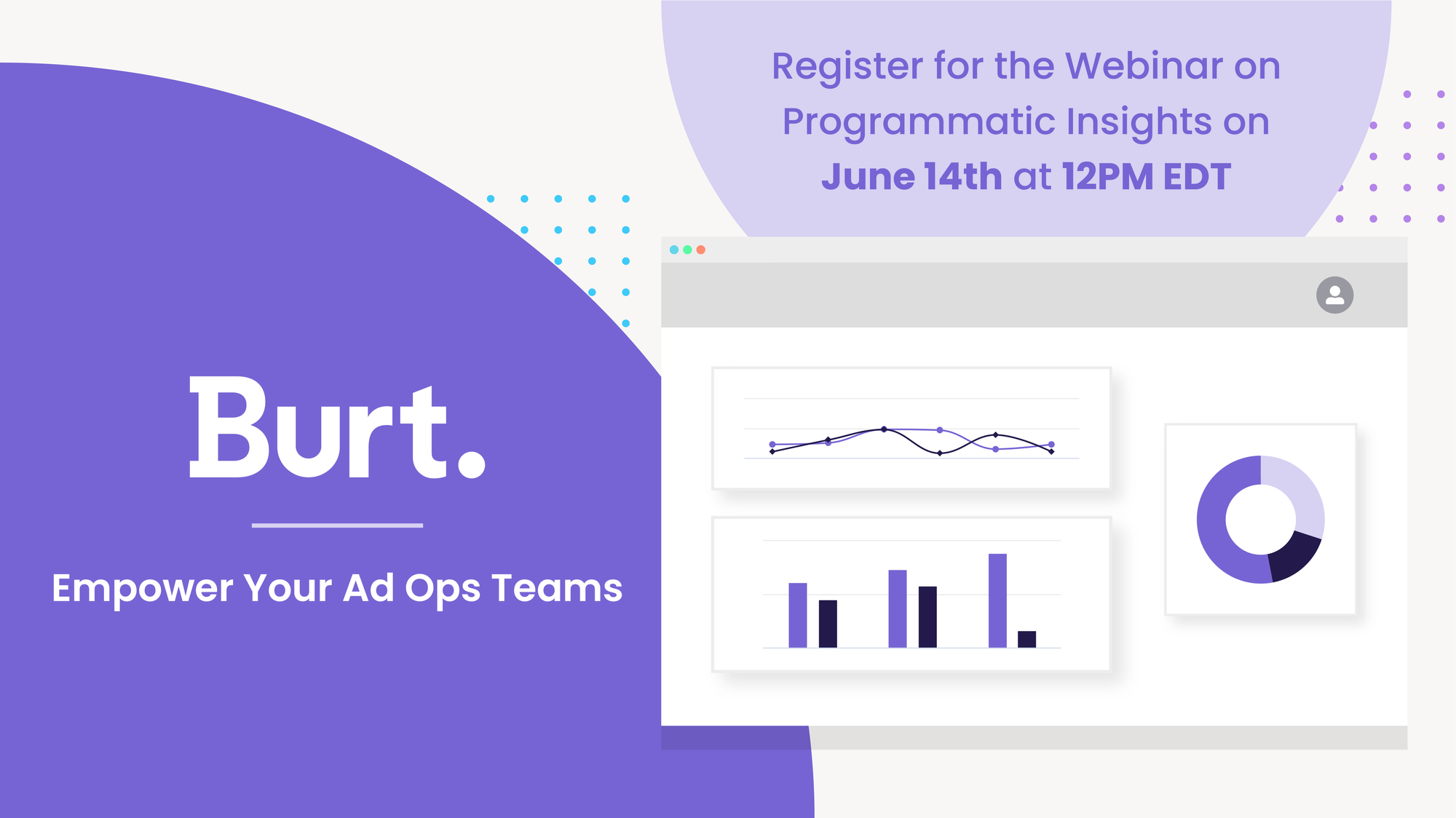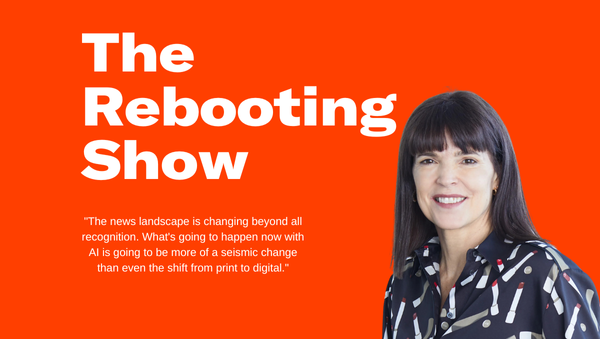Media’s less glamorous future
Bobbing on an ocean of crap
For those heading to Cannes, check out our various events we’re doing there and RSVP. Hope to see you there.
Thanks to Burt, Nativo and Impact for their sponsorship of The Rebooting.

Unique Demand. Yes. Really.

Overly dependent on programmatic display & video revenue for site monetization? When it comes to third party monetization solutions, publishers must look beyond the commoditized display ecosystem for net new monetization opportunities that deliver results.
We’re Nativo, and that’s what we do. Our proprietary brand content demand delivers content-centric budgets from the world’s largest brands and provides an ad experience that informs, entertains and delights your audiences.
Ready to stand apart? Leverage the Nativo Platform and activate truly unique demand today.
Media’s less glamorous future
The media business has always had outsized influence and place in culture compared to its economic clout.
The media business has often acted as a shiny object to front other less glamorous businesses. Some of the brands judged the most successful in previous eras were notorious for their ability to lose money. Still, the media business done well could generate reliable, steady returns. Hearst wasn’t about losing money – and now half its business is in B2B, something I’m discussing with David Carey in an upcoming podcast.
Perhaps it’s the toxic cloud hanging over New York the last few days, but I can’t help but feel a similar situation confronts a swathe of the media business. CNN’s Chris Licht began the week as a dead-man walking after a “disastrous” profile in The Atlantic that confirmed much of the existing reporting on his tenure at CNN. (Dylan was right.) In a talent business, he wasn’t popular with the talent. And cable news is like the NBA, where the coaches don’t make nearly as much as the players. That means the players call the shots, not the coach.
Ben Smith identified the larger point of the greasy saga of backbiting and egos: Cable news is unraveling, and like most unravelings it goes slowly and then all at once. The Trump bump was an artificial sugar high that wears off. Cable news has long held a mostly unearned power considering its shrinking and elderly audience. There’s a reason anytime you turn on Fox News or CNN the ads are for pharmaceutical products. The audiences are very old, in the mid 60s. CNN is still a reliable cash generator, despite a primetime audience that could sometimes fit in a large soccer stadium. Still, the success of Zaslav’s project will be determined by Max, not whatever becomes of CNN.
The financial success of cable news is mostly down to a sweetheart business model of carriage fees with ads on top. Those fees are subsidies, with the costs passed on to people whether they watch the programming or not. ESPN has long extracted the largest of these fees. But with sports programming fragmenting, and even ESPN at risk of going direct, the cable bundle itself could fully unwind. When only a third of Americans have cable TV, a likely outcome in the next few years, this model crumbles. Live sports is the glue. When the future of cable is YouTube, you can be sure the economics are going to be completely different. And media economics only get tougher, just as CPMs only go in one direction that isn’t up.
The Licht story will mostly be viewed through a different lens: the effort, directed by his boss David Zaslav, to steer CNN to “non-partisan news.” I’d think someone who understands the popularity of Dr Pimple Popper would understand what’s popular in news, and it isn’t dry, on-the-one hand, on-the-other-hand reporting. It’s personality-driven drama that allows people to root for their team and against the bad guys. News itself, for the most part, is entertainment or filler on Gas Station TV with volume on high and the mute button hard to find. Logan got this.
Outside cable news, the news business itself is not very profitable outside a few exceptions. If media execs feel depressed at their inability to figure out sustainable models, don’t feel so bad.
Time and again, billionaires who made fortunes in disparate fields swagger into the media business, only to get punched in the face, if not lower on the body. It’s been five years since Patrick Soon-Shiong, who made billions in biotech after a career as a transplant surgeon, took over the L.A. Times, and it is still struggling to find a workable model, having just this week shed 13% of staff as ad revenue slumps and its efforts to build a subscriptions business fails to cover the gaps. (Unsurprisingly, they targeted the copy editors.) Meanwhile, digital upstarts are hitting middle age, with Insider dealing with striking workers marching around outside Zuccotti Park, home to Occupy. The media business used to function like drug dealing: It was a glamor profession that attracted people for the shot at prestige vs more sensible career choices.
I watched Brett Baier the other week with my parents. They watch Brett every night after dinner. What I was struck by was they told me they watch him, not Fox. When he had a replacement host, they were far less interested. I wouldn’t be surprised if Tucker Carlson is as successful on his own as he was with the Fox imprimatur. That unbundling will put further pressure on the model where media brands trade on glamor, credibility and distribution. The new Tuckers or Bretts are YouTubers and podcasters.
Individuals will have more options without the need for the glamor and credibility of legacy media brands. Lauren Sherman wrote that an upside to Edward Eninful’s “promotion” out of the editorship of British Vogue, one of the top perches in the industry, was that he could make more money. That’s because running one of the most influential fashion magazine brands “no longer competes with the commercial opportunities afforded to styling ad campaigns and consulting brands.” There’s a reason Vogue’s presence in Cannes later this month will be as a content provider to Snap.
In another corner of media, I don’t think enough is written about the sea change coming to digital publishing in the wake of generative search. A digital publishing veteran pulled out his laptop yesterday to show how Google’s beta generative search will wipe out much of the traffic going to pages for a type of typical SEO-optimized search.
This is the highest margin output of most digital publishers, beyond the massive sector of so-called made-for-advertising sites that clog content rec ad networks and search results. And to be fair to MFA publishers, there’s a fuzzy line since much of media is made for advertising, let’s be real. Using the Arc browser with ad blocking integrated makes me wonder how long pages will last. Using Artifact to “explain it to me like I’m five” makes clear that tech will give people the controls to truly personalize content in ways that relegate its creators to miners of raw material. The jokes about “the content mines” were prescient.
An evergreen story is nearly all margin. Maybe you paid a couple hundred bucks to get it made, then have to updates it from time to time. Publishers have been subsidizing other less lucrative content with this kind of filler that acts as a savings bond. Kiss that goodbye, you’re going to kiss goodbye to a lot of publishers. You could think that would mean inflation for ad prices, only again CPMs go in one direction.
The most vibrant areas of the future will be smaller and more steak than sizzle. Media’s role as the interface for culture is gone. It won’t come back, and adjusting to the end of empire is always a messy affair. It will require a certain humility. As one exec wrote me this week: “All media are like corks bobbing on an ocean of crap, and the world of powerful, all-knowing, all-being media entities is gone.” For now, publishers are diminished and left to duke it out in the search results to try to win a spot on Page 1 on “when will the smoke go away” and “Livvy Baby Gronk” meme searches. Enjoy it while it lasts.

Webinar: Programmatic insights
Burt Intelligence provides a platform for publishers to analyze and optimize their advertising data. Don't miss their webinar on June 14 dedicated to programmatic insights. Gain valuable knowledge on programmatic strategies, benchmarks, and best practices that will supercharge your advertising revenue. Register now to secure your spot!
We covered the CNN saga, prior to Chris Licht’s defenestration, on the People vs Algorithms podcast, along with thoughts on what Google’s new mixed-reality goggles means for where media and humanity intrepidly go next.

Do you know how much you’re losing in commissions to link rot? On average, publishers lose $160 million to broken and OOS links annually. Stop contributing to that. Use Trackonomics’ Link Scanner calculator to discover how much you could save by fixing your broken and out of stock links.
Thanks for reading. Get in touch to discuss sponsorship programs to reach nearly 17,000 leaders in creating sustainable publishing businesses.




